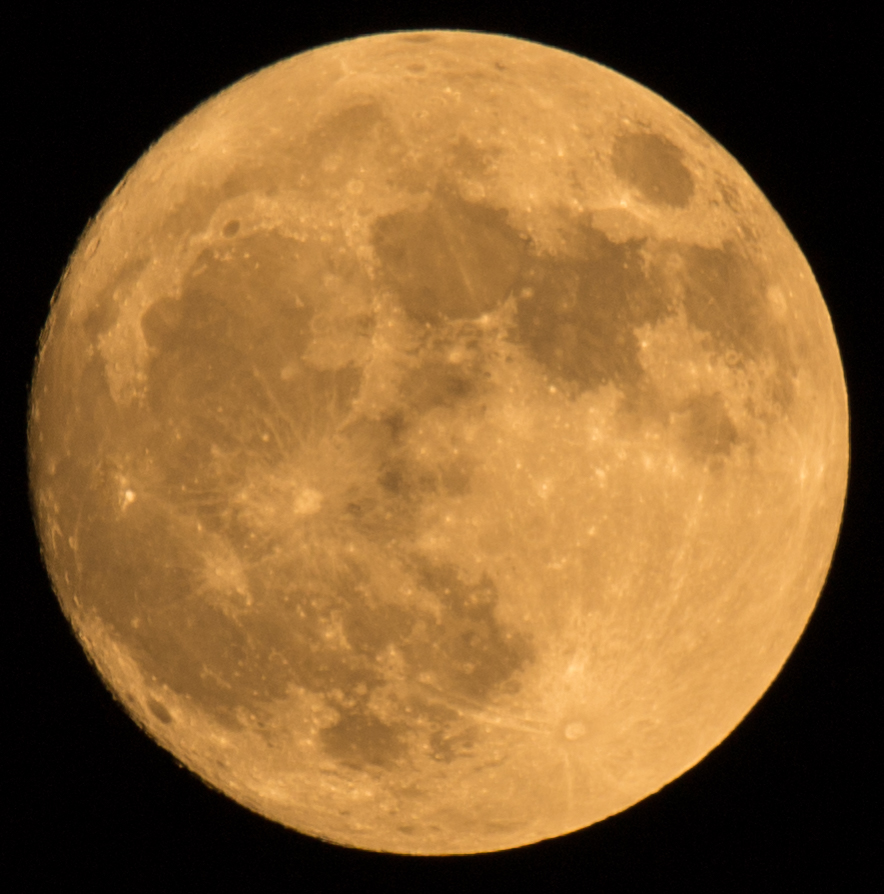Photographing the supermoon does not require much special equipment, but you will want to use a long lens (200 mm or greater – the longer the better) and a tripod. The long lens will magnify the size of the moon’s image, so that it is bigger than a white dot. You’ll also want to use a remote shutter trigger, or the camera’s timer, if you don’t have a remote. You can use the Mirror Lock Up feature to eliminate nearly all vibrations.
You’ll want to manage the sharp contrast between light and dark in moon photos with your camera settings. This involves manually setting the shutter speed, aperture, and the ISO.
In a nutshell, you’ll want the camera in “Manual Mode”, with the ISO set to 100, the shutter speed set to 1/125, and the aperture set to f/11. The lens focus should be manual, and set to infinity. I followed this recipe myself for the November 2016 Supermoon, but found I needed to increase the shutter time to 1/80 second.

Dennis Freeman, Supermoon, Nov 13: Canon 6D, Tripod, Sigma 150-600 mm @ 550 mm, 1/80 sec, f/11, ISO 100
To see why you should start with these settings, what values are tolerable, and how to use Photoshop to include foreground elements in you moon shot, see the following article:
https://photographylife.com/how-to-photograph-moon
